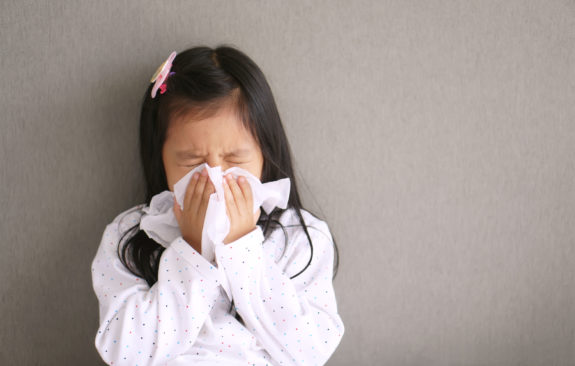
Sore throat is a common problem during childhood and can be the result of a viral or bacterial infection.
The most likely cause of a child’s sore throat depends on the child’s age and the season. Testing may not be necessary if your child is having symptoms such as a prominent cough, hoarseness or other symptoms that suggest a viral infection. Testing children younger than 3 years old is usually not needed because bacterial pharyngitis (Strep Throat) is uncommon in this age group. Although, it may be necessary if other family members in direct contact with the child is diagnosed with Group A Strep Throat (GAS).
Viral sore throats are the most common.
It can be part of a common cold or other viral infections such as flu or mononucleosis. Viruses do not require antibiotic treatment. Unnecessary antibiotics can be harmful and may cause other side effects without helping the sore throat.
Bacterial sore throats are caused by a bacteria called Group A streptococcus(GAS).
This type of sore throat usually occurs during the winter and early spring and is most common in school-aged children.
Symptoms of bacterial sore throat (Strep Throat) can quickly develop and include fever, headache, abdominal pain, nausea, and sometimes vomiting. Other symptoms may include swollen glands in the neck, white patches in the throat, small red spots on the roof of the mouth, and swelling of the tonsils and uvula. Although Strep throat is not common in children under the age of three years, Group A streptococcus (GAS ) can occasionally occur in younger children and may cause a runny nose and congestion that is prolonged, tender swollen glands in the neck, decreased appetite, and low-grade fevers.
Bacteria and viruses spread from one person to another person directly (hand to hand contact) or indirectly (hand to object like a door knob or toy). Hand washing is essential to preventing the spread of infection. Alcohol-based hand rubs are a good alternative for disinfection hands if a sink is not available.
While it is not always possible to limit contact with a person who is sick, the spread of infection can be prevented by avoiding touching the eyes, nose, or mouth areas. Tissues should be used to cover the mouth when sneezing or coughing. Sneezing or coughing into the sleeve of one’s clothing (at the inner elbow) should be taught to children to reduce the spread of illnesses.
It may be difficult for a parent to know whether their child’s sore throat is caused by Group A Streptococcus(GAS) or a virus.
Parents are encouraged to call their child’s health care provider to determine if the child needs to be evaluated, especially if one or more of the following symptoms are present:
- Fever >101 F or 38.3 C
- Season is late fall, winter or early spring
- No cough or cold symptoms are present
- Child’s age is between 5 to 15 years
- Recent exposure to someone with strep throat
- Difficulty swallowing or breathing
- Child’s voice sounds muffled (not hoarse or raspy)
- Stiff neck or difficulty opening their mouth
- Unexplained rash to upper body
If Strep Throat is suspected a test may be done to confirm the diagnosis. There are two types of tests available to diagnose strep throat: a rapid test and a culture. Both test require the provider to swab the back and sides of the child’s throat. Results for the rapid test are available in the clinic within a few minutes. The culture results are not available for 2 – 3 days. When the rapid test is negative, a throat culture must be done to confirm that GAS is not present. If either the rapid test or the send-out culture is positive for Group A Strep, the child will be treated with an antibiotic.
Viral throat pain can be treated with a nonprescription pain medications such as Tylenol or Motrin. Children, usually over six years old, may use salt water gargle (gargle and spit, do not swallow) and/or throat lozenges. Sore throat lollipops may be used in younger children. Many of these contain honey to soothe the throat. Children under the age of one year should not take any medications or use any remedies that contain honey due to the risk of botulism.
Amoxicillin or Penicillin are the most commonly used antibiotics for Group A Strep (GAS), but if there is an allergy to Penicillin, they will be given an alternate antibiotic. Children that are treated with antibiotics by 5 p.m. are unlikely to be contagious by the next day. Some providers allow children to attend school the following day, if they are feeling better and do not have a fever. It is important for the child to finish the entire course of medication which is (10 days). If your child does not begin to improve or worsens within three days, the child should be reevaluated by a healthcare provider.
Little Spurs Pediatric Urgent Care opened in 2006 in San Antonio, Texas. With multiple locations in San Antonio and Dallas, they are open seven days a week with extended evening hours and see walk-in patients or through an online check-in system. They accept most commercial insurance and Medicaid plans.



